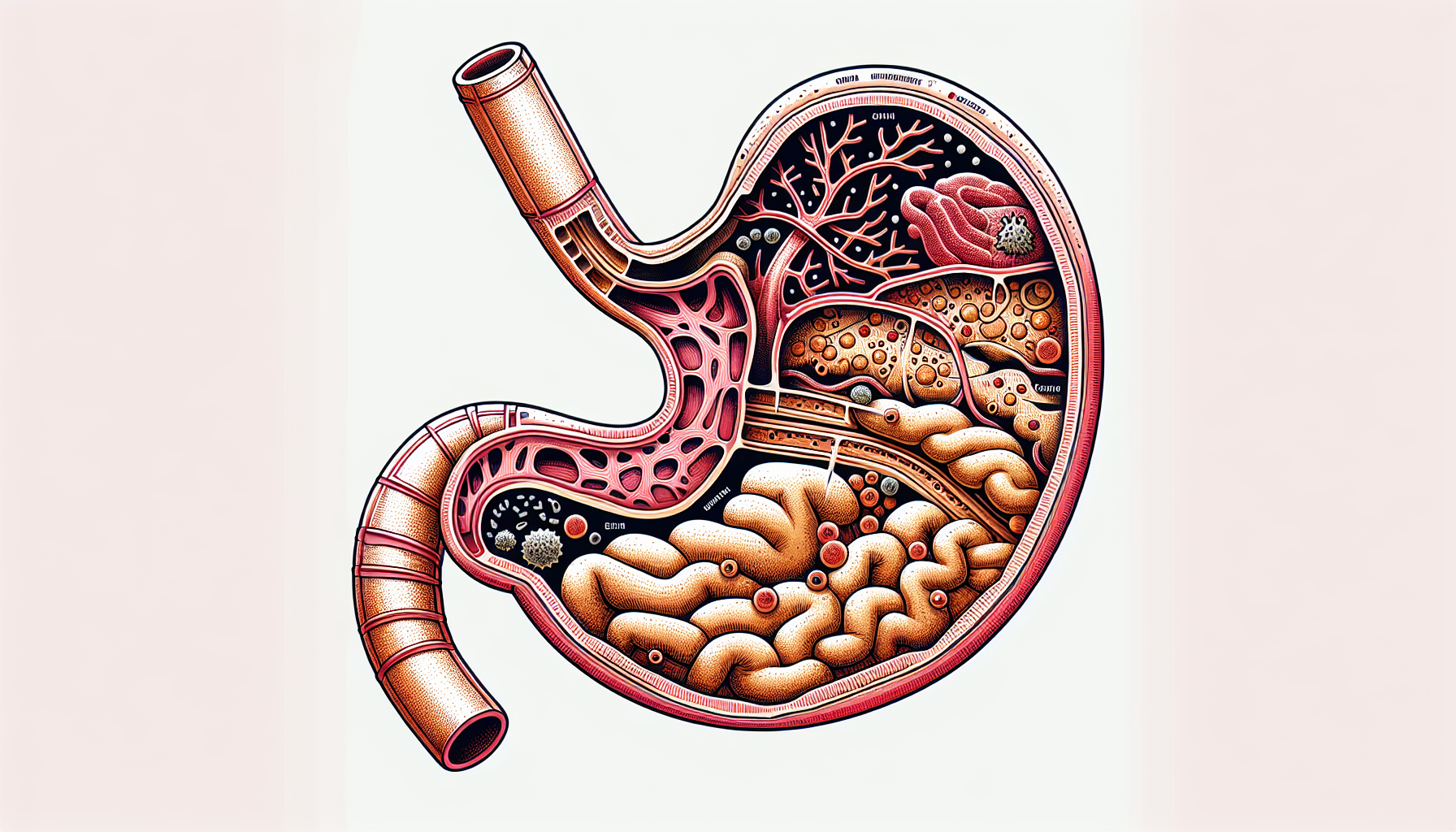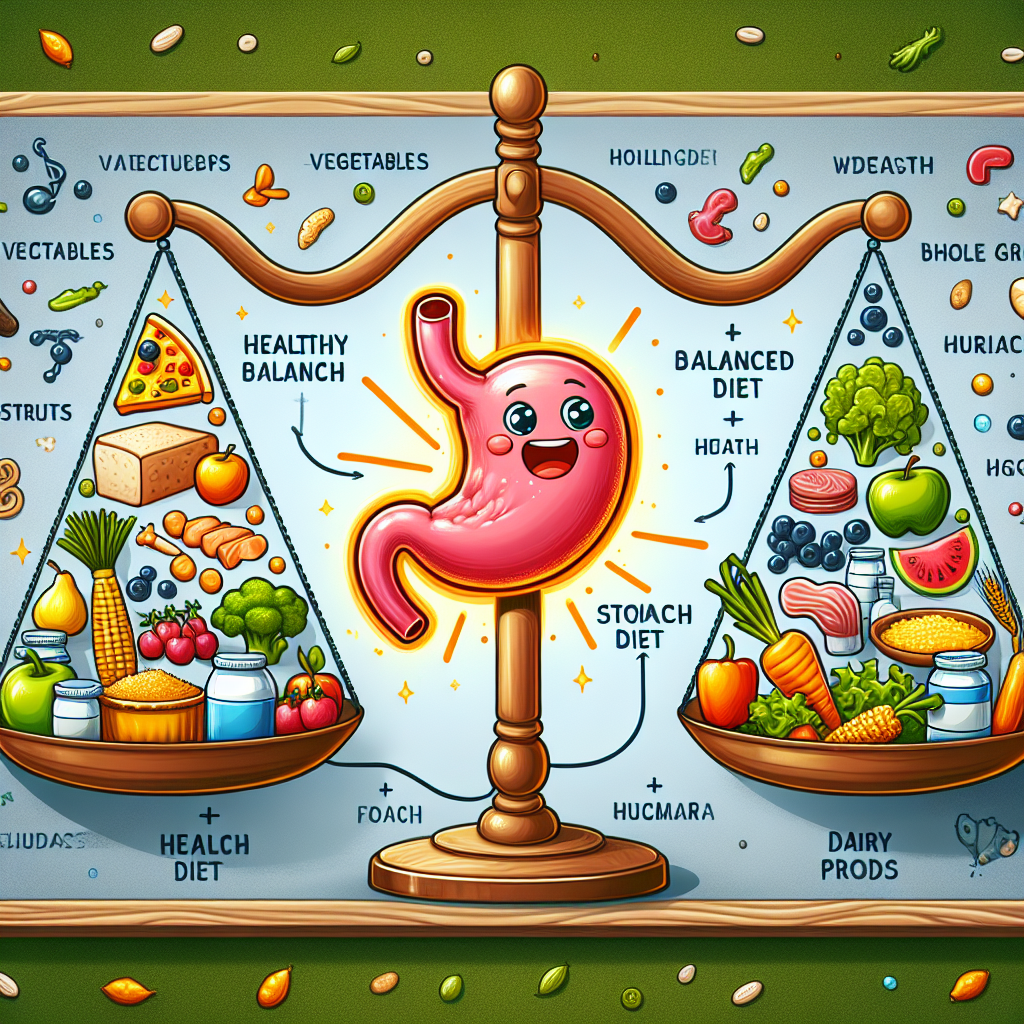Stomach acid, a crucial component of the digestive system, plays an essential role in the maintenance of gastrointestinal health. Its primary function is to break down food into absorbable nutrients, but it also serves as a vital barrier protecting the body from a variety of pathogens. In this comprehensive exploration, we will delve into the multifaceted nature of stomach acid and its significance in safeguarding our health.
The Protective Mechanism of Stomach Acid
The stomach is armed with gastric acid, a mixture primarily composed of hydrochloric acid (HCl), potassium chloride (KCl), and sodium chloride (NaCl). This potent combination creates a highly acidic environment, with a pH that typically ranges from 1.5 to 3.5. This acidity is lethal to many bacteria, viruses, and fungi that are ingested with food or drink, preventing these potential threats from colonizing the gastrointestinal tract and causing infections.
Barrier Against Infections
Pathogens that survive the passage through the acidic stomach environment still face the challenge of adhering to and penetrating the gastrointestinal lining. The stomach acid acts not only as a chemical barrier but also as a trigger for other defense mechanisms. It stimulates the production of digestive enzymes that further break down potentially harmful organisms and activates the secretion of mucus, which forms a protective layer on the stomach lining. For an in-depth look at Digestive Health, visit our dedicated resource.
Acid and Enzyme Balance
Maintaining the balance of stomach acid and digestive enzymes is crucial for optimal digestive function. When this balance is disrupted, it can lead to a range of gastrointestinal disorders. For instance, low stomach acid levels can create an environment more conducive to the survival and proliferation of pathogens. Conversely, excessive acid can lead to conditions like gastroesophageal reflux disease (GERD). Understanding this balance is key to recognizing the importance of enzyme diversity in Digestive Health Maintenance.
The Role of Diet and Lifestyle in Stomach Acid Regulation
Diet and lifestyle choices can significantly impact the production and regulation of stomach acid. Factors such as chronic stress, poor dietary choices, and certain medications can lead to dysregulation of acid production. On the other hand, a diet rich in whole foods, particularly those with sufficient dietary fiber, can promote a healthy stomach lining and adequate acid levels.
Plant-Based Diets and Gastrointestinal Health
A plant-based diet, rich in fruits, vegetables, legumes, and whole grains, can have a positive effect on stomach acid regulation. Such diets are typically high in fiber, which can aid in maintaining a healthy digestive system. For those considering this dietary approach, our article on The Role of Plant-Based Diets in Managing Gastrointestinal Disorders offers valuable insights.
Stomach Acid Imbalance and Its Consequences
When the delicate balance of stomach acid is disturbed, it can result in either hypoacidity or hyperacidity. Hypoacidity, or low stomach acid, can lead to malabsorption of nutrients and an increased risk of infection from food-borne pathogens. Hyperacidity, on the other hand, can cause various types of discomfort and contribute to the development of ulcers and GERD.
Addressing Imbalance Through Nutrition and Lifestyle
Addressing stomach acid imbalances often involves dietary changes, lifestyle modifications, and in some cases, medical intervention. Nutritional strategies may include the consumption of fermented foods, which can support a healthy gut microbiome. Lifestyle practices such as mindful eating and stress reduction techniques can also help regulate acid levels. For further guidance, explore our article on Nutritional Tips for Restoring Gut Health After Antibiotic Therapy.
Recognizing the Signs of Imbalance
Understanding the symptoms of stomach acid imbalance is vital for timely intervention. Symptoms can range from heartburn, bloating, and indigestion, to more severe signs like chronic diarrhea or unexplained weight loss. If you experience persistent digestive discomfort, it is crucial to consult with a healthcare professional.
Advances in Medical Understanding and Treatment
The medical community continues to make advances in understanding the role of stomach acid in overall health. With new diagnostic tools and treatment options, it is now easier to identify and manage conditions related to acid imbalance. For instance, innovative therapies are being developed to address chronic gastrointestinal pain, as discussed in Techniques for Effective Management of Chronic Gastrointestinal Pain.
External Resources for Further Reading
- The American Journal of Clinical Nutrition offers extensive research on how diet influences gastric acid secretion.
- The National Institute of Diabetes and Digestive and Kidney Diseases provides in-depth information on digestive diseases and conditions.
- The International Foundation for Gastrointestinal Disorders features resources on various gastrointestinal disorders and management strategies.
Conclusion
Stomach acid is a critical component of our digestive system, serving as a first line of defense against pathogens and aiding in food digestion. Maintaining a balance of stomach acid is essential for protecting against infections and ensuring the proper absorption of nutrients. Through a combination of dietary choices, lifestyle changes, and medical interventions when necessary, individuals can support their stomach acid levels and contribute to their overall gastrointestinal health.
As we continue to understand more about the complexities of stomach acid and its role in our body’s defense mechanisms, we can better appreciate the importance of maintaining its balance for our health and well-being.



